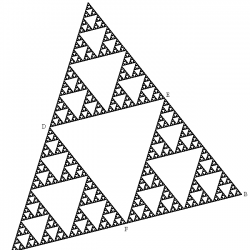 Multiplication is a mathematical operation that is learned in the early years of school. There are two traditional methods for learning it: the multiplication tables and the Pythagorean table.
Multiplication is a mathematical operation that is learned in the early years of school. There are two traditional methods for learning it: the multiplication tables and the Pythagorean table.
What does it consist of?
Two axes are distributed in a table, one horizontal and the other vertical. In each of them the numbers from 1 to 10 are distributed and then a grid is drawn with a box for each multiplication between the numbers of the two axes.
Next, the numbers on the horizontal axis are multiplied with those on the vertical axis and the result is then placed in the corresponding box on the grid. Either of the two axes or columns can function as a multiplicand or multiplier. Once all the numbers have been multiplied with each other, the Pythagorean table is already completed.
The Pythagorean table is more visual than the traditional multiplication table. In any case, both learning systems are valid and complementary. Many teachers teach the traditional tables and then explain the mechanics of the Pythagorean table to reinforce learning.
Other contributions of Pythagoras to mathematics and philosophy
One of the best known principles in geometry is the famous Pythagorean theorem. According to it, in every right triangle there is a relationship between the hypotenuse (the longest side) and the legs (the smaller sides of the triangle). In mathematical language the theorem says the following: the square of the hypotenuse is equal to the sum of the squares of the legs.
Pythagoras was a Greek mathematician and philosopher of the Vl century BC. C. His contribution was not limited to multiplication tables or the Pythagorean theorem. In fact, this mathematician claimed that the universe as a whole can be explained in the language of mathematics. This idea is accepted by any current scientist. On the other hand, this Greek mathematician reached the following conclusion: measurements of his time based on empirical observation were expressible in an abstract way.
Although Pythagoras did not leave written testimonies, it is considered that he was the first to call himself a philosopher, which literally means "one who loves wisdom"
According to this philosopher, the entire universe forms an ordered cosmos and its ordering can be described with mathematical principles. The cosmic order has a mathematical dimension that in turn is projected onto the human soul.
Apart from his philosophical reflections and his mathematical vision, his followers created a current of thought, the Pythagorean school. Some of the members of this current, for example Philolaus of Tarentum, exerted a notable influence on Plato's thought.
Photo: Fotolia - rudrtv









